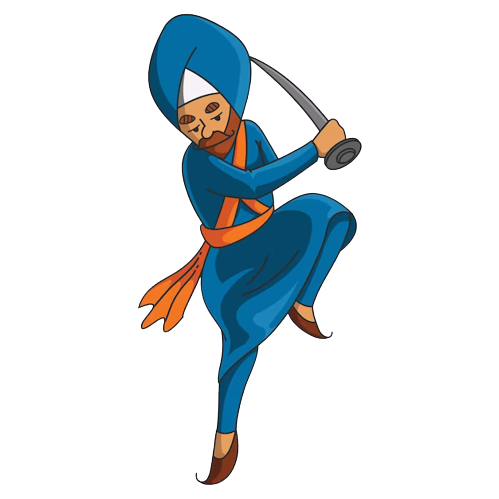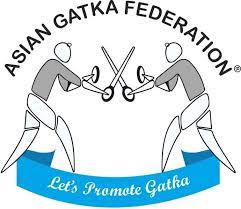HISTORY OF GATKA
Gatka, an age-old martial art, holds a significant place within the rich tapestry of Sikh culture and Indian heritage. This unique tradition has deep roots in history, spanning over 600 years, and is regarded as an invaluable intangible cultural heritage. Gatka is an integral component of ‘Sikh Shashtar Vidiya,’ a comprehensive system of techniques for using weapons and equipment, which includes the training for self-defense.
HISTORICAL ASPECTS OF GATKA
Gatka, an age-old martial art, holds a significant place within the rich tapestry of Sikh culture and Indian heritage

Gatka, an age-old martial art, holds a significant place within the rich tapestry of Sikh culture and Indian heritage. This unique tradition has deep roots in history, spanning over 600 years, and is regarded as an invaluable intangible cultural heritage.

One of the pivotal figures in the promotion of Shastar Vidiya among Sikhs was the sixth Guru, Sri Guru Hargobind Ji, who introduced and championed these flamboyant techniques. These skills were passed down through generations.

The British rulers, wary of rebellion and anti-colonial sentiments, imposed a ban on sharp-edged weapons, including Spear or Barcha (now referred to as Javelin), martial art Gatka, and the Sikhs’ practice of carrying the Kirpan (sword).
- At its core, Gatka involves combat with wooden sticks, known as ‘Soti,’ which are used to simulate the use of swords. In Gatka, these ‘Soti’ and ‘Farrie’ (a leather shield) are employed as substitutes for the traditional ‘Sword’ and ‘Shield.’ The practitioners engage in dynamic and rhythmic combat, with one participant launching an attack, while the opponent artfully blocks the strike and counter-attacks, creating an engaging and captivating martial art form.
- The roots of this ancient martial art, particularly ‘stick-fighting’ (Soti), can be traced back to the timeless pursuit of self-defense. Sikh martial art ‘Gatka,’ which centers around the practice of stick-fighting, began to evolve as a distinctive self-defense style in Northern India during the fourteenth century. Gatka ‘Soti’ is deeply intertwined with the Sikh history, representing an essential facet of Sikh Shastar Vidiya, the extensive array of skills associated with the use of weapons.
- One of the pivotal figures in the promotion of Shastar Vidiya among Sikhs was the sixth Guru, Sri Guru Hargobind Ji, who introduced and championed these flamboyant techniques. These skills were passed down through generations, emphasizing their historical significance within Sikh culture. The tenth Guru, Sri Guru Gobind Singh Ji, is celebrated as one of the greatest masters of weaponry during his era.
- However, the British colonial rule in India brought significant challenges to these martial traditions. The British rulers, wary of rebellion and anti-colonial sentiments, imposed a ban on sharp-edged weapons, including Spear or Barcha (now referred to as Javelin), martial art Gatka, and the Sikhs’ practice of carrying the Kirpan (sword). This led to a period of secrecy and adaptation, as Sikhs continued to practice Shastar Vidiya in secluded rural areas. Under these constraints, the martial arts transformed into folk sports, with sticks replacing swords, enabling the preservation of their heritage in the face of adversity
- The University of Panjab, initially located in Lahore and now in Chandigarh, played a pioneering role in the development of Gatka as a sport. The university organized inter-college and inter-varsity Gatka tournaments before the partition of India and drafted the Gatka rules book in 1936 for regulated play in sports attire. However, after 1985, this game faced a decline as colleges and universities in Punjab discontinued regular competitions.
- Yet, through continuous evolution and the dedicated efforts of Gatka sports organizations such as NGAI, WGF, the International Sikh Martial Art Council, the Gatka Association of Punjab, and the Gatka Akharas (training schools) across the country, Gatka has not only persevered but also progressed to its present status as a martial art of great valor. It remains a testament to the resilience and determination of those who cherish and uphold this cultural treasure.
